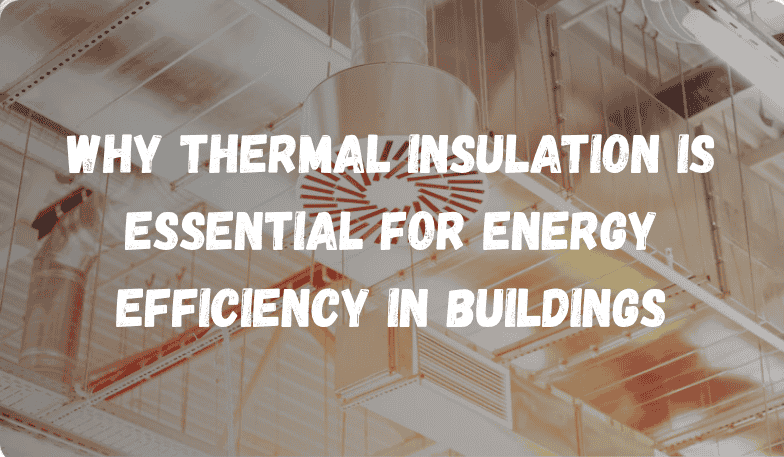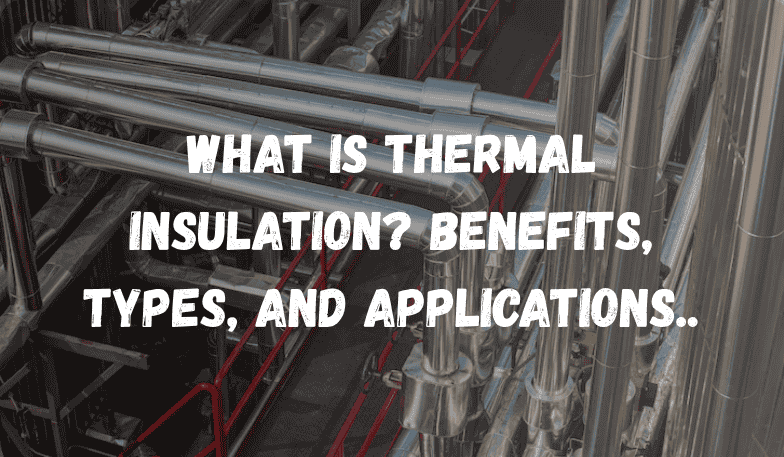
Why Thermal Insulation Is Essential for Energy Efficiency in Buildings
In today’s world, energy efficiency is not just a trend — it’s a necessity. With growing concerns over rising energy costs, climate change, and sustainable living, homeowners, builders, and industrial facility managers are constantly seeking ways to reduce energy consumption. One of the most effective, yet often overlooked, methods to achieve this is thermal insulation.
Thermal insulation plays a crucial role in minimizing energy loss in buildings, enhancing indoor comfort, and promoting sustainability. Whether in residential homes, commercial complexes, or industrial facilities, proper insulation is essential for energy conservation and long-term savings.
In this blog, we’ll explore why thermal insulation is vital for energy efficiency in buildings, the science behind it, and the materials and methods used. By the end, you’ll see why it’s a smart investment for both your wallet and the planet.
What Is Thermal Insulation?
Thermal insulation is the process of using materials or systems that reduce the transfer of heat between different environments. In the context of buildings, it refers to preventing heat from entering a building in hot climates or escaping in colder climates.
Without proper insulation, buildings require excessive heating or cooling to maintain comfortable indoor temperatures — which directly leads to higher energy consumption and electricity bills.
The Science Behind Insulation and Energy Loss
Heat always flows from a warmer area to a cooler one. In buildings, this means:
- In summer, heat flows into the building.
- In winter, heat escapes out of the building.
This heat transfer happens through:
- Conduction: Heat passing through solid walls, ceilings, and floors.
- Convection: Heat movement via air circulation.
- Radiation: Heat transfer through electromagnetic waves (especially from sunlight).
Thermal insulation minimizes all three types of heat transfer by using materials with low thermal conductivity. This creates a thermal barrier, reducing the workload on HVAC (Heating, Ventilation, and Air Conditioning) systems and increasing energy efficiency.
How Thermal Insulation Enhances Energy Efficiency
1. Reduced Heating and Cooling Demand
Insulated buildings maintain a more stable indoor temperature. This means HVAC systems work less frequently and for shorter durations, reducing electricity and fuel consumption significantly.
2. Lower Energy Bills
Because less energy is used to heat or cool a well-insulated building, occupants enjoy lower monthly utility costs — a major advantage over time.
3. Decreased Carbon Footprint
Lower energy consumption leads to fewer greenhouse gas emissions. This contributes to sustainable living and greener construction practices.
4. Improved Comfort
Insulation maintains a consistent indoor climate, preventing hot spots, cold drafts, or uneven temperatures across rooms.
5. Long-Term Savings
Though insulation requires an upfront investment, the return on investment (ROI) is substantial. Most property owners recover costs within a few years through energy savings.
Key Areas Where Insulation Is Needed in Buildings
To fully realize the energy-saving benefits of thermal insulation, specific areas of the building must be targeted:
1. Walls
External walls are one of the largest sources of heat gain or loss. Insulating them — internally or externally — can dramatically improve thermal performance.
2. Roof & Ceiling
Hot air rises, making the roof and attic prime spots for heat loss in winter and heat gain in summer. Under deck insulation and steel roof insulation are popular solutions.
3. Floors
Insulating floors helps maintain comfort and prevents thermal bridging, especially in colder climates or multi-story buildings.
4. Pipes & Ducts
Uninsulated pipes and HVAC ducts lead to significant energy losses. Materials like PUF pipe sections, rockwool, or nitrile rubber are commonly used.
5. Doors & Windows
Though not traditional insulation materials, using double-glazed windows and draft-proof doors plays a major role in thermal efficiency.
Popular Thermal Insulation Materials for Energy-Efficient Buildings
Several insulation materials are available in the Indian market today. Here are some of the most energy-efficient and cost-effective options:
1. Bonded Rockwool Slabs & Mattresses
- Excellent thermal and acoustic insulation.
- Fire-resistant and ideal for both wall and roof applications.
2. Bonded Fiberglass Wool
- Lightweight, flexible, and ideal for HVAC ducts and ceilings.
- Great for residential and commercial buildings.
3. PUF (Polyurethane Foam) Pipe Section & Slabs
- One of the best insulators due to its low thermal conductivity.
- Widely used in cold storage, pipes, and refrigerated buildings.
4. Nitrile Rubber (Closed Cell)
- Resistant to moisture and perfect for chilled water and AC pipelines.
- Highly effective in reducing condensation and energy loss.
5. XLPE (Cross Linked Polyethylene) Sheets
- Lightweight and versatile.
- Used in HVAC ducting, false ceilings, and roof insulation.
6. Air Bubble Insulation Sheets
- Cost-effective radiant barrier.
- Used for roof heat insulation, color coated roofing sheets, and under deck insulation.
7. Thermocol Sheets
- Economical and used in walls and partitions.
- Ideal for temporary or low-load applications.
Thermal Insulation in India: Trends and Pricing
India’s diverse climate zones make insulation a necessity in both hot and cold regions. As awareness about energy efficiency, green buildings, and sustainable architecture grows, the demand for high-quality insulation materials and services is increasing rapidly.
Thermal Insulation Price in India
- Prices vary based on the material, thickness, brand, and application.
- For example:
- Air bubble insulation sheets: ₹30–₹50/sq.ft.
- PUF slabs: ₹150–₹300/sq.m.
- Rockwool slabs: ₹80–₹200/sq.m.
- Bulk installation and industrial projects can often negotiate better pricing with established insulation contractors.
Top Thermal Insulation Companies in India
When selecting insulation, quality of material and expertise of the contractor are key. Many insulation companies in India offer comprehensive services, including material supply and on-site installation.
Some commonly searched terms include:
- Top thermal insulation companies in India
- Best insulation contractors
- Under deck insulation materials
- Heat resistant sheets for terrace
- Cold insulation material in India
For lasting results and reliable performance, always choose a company that specializes in both hot and cold insulation, uses certified materials, and offers post-installation support.
Final Thoughts: Don’t Compromise on Insulation
Thermal insulation is a silent hero in energy-efficient buildings. It works behind the scenes, saving energy, lowering bills, enhancing comfort, and reducing your carbon footprint. Whether you’re constructing a new property or retrofitting an existing one, investing in proper insulation pays dividends — financially and environmentally.
Red Hot Solution – Your Trusted Partner in Thermal Insulation
At Red Hot Solution, we understand the value of efficient thermal insulation in modern construction. With years of expertise, advanced products, and a highly skilled team, we deliver tailored insulation services for residential, commercial, and industrial applications.
We specialize in:
- Hot and cold insulation
- Under deck and roof insulation
- Industrial pipe and equipment insulation
- Custom solutions using Rockwool, PUF, XLPE, Nitrile Rubber, and more
When you choose Red Hot Solution, you’re choosing quality, reliability, and energy savings that last for years.
Contact Red Hot Solution today and take the first step toward building a more energy-efficient and comfortable space.




